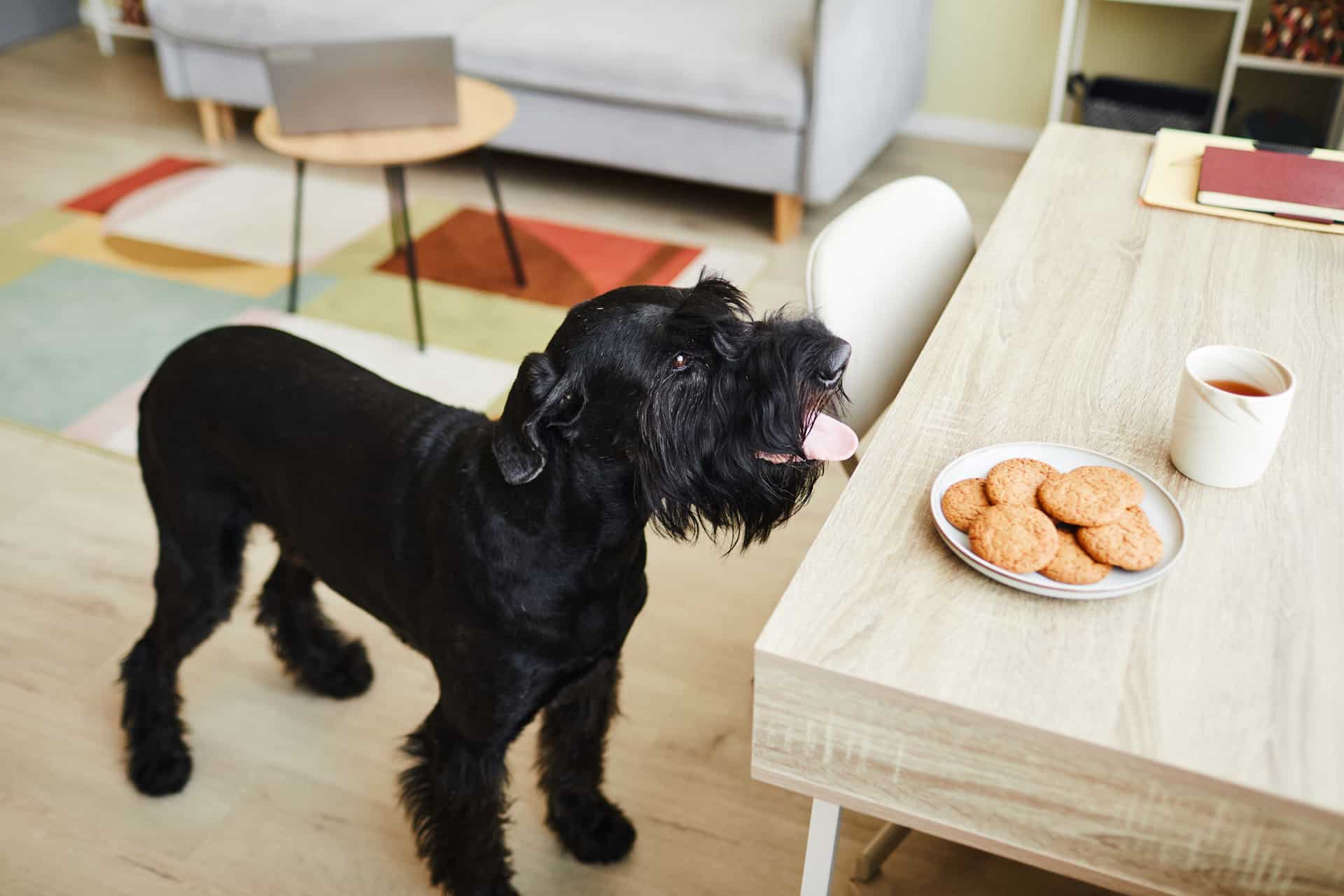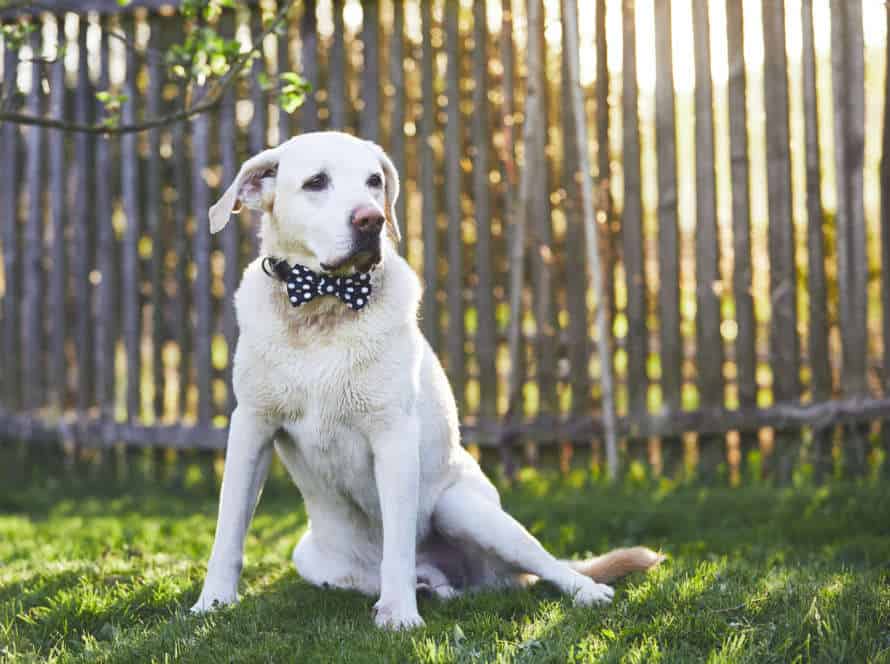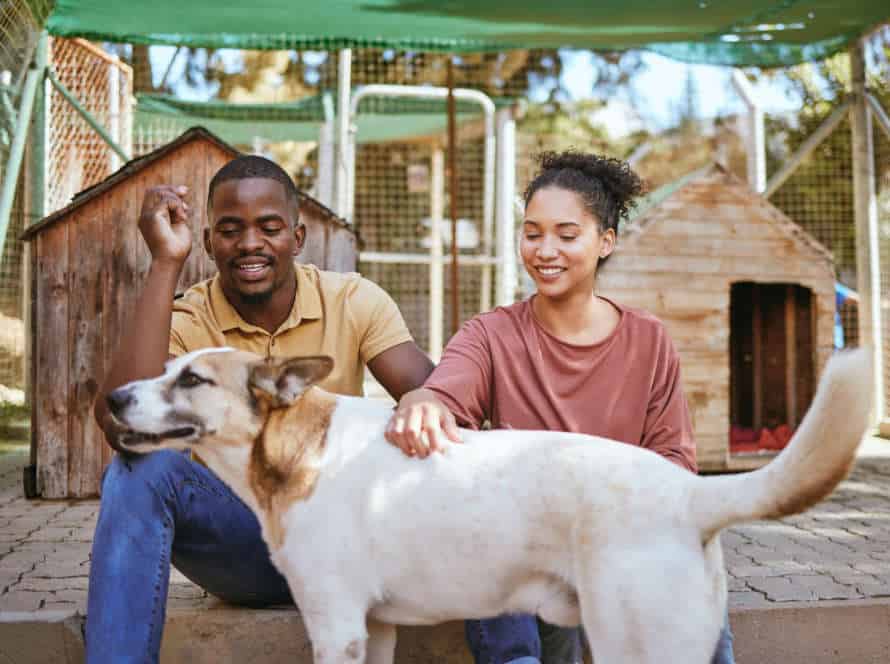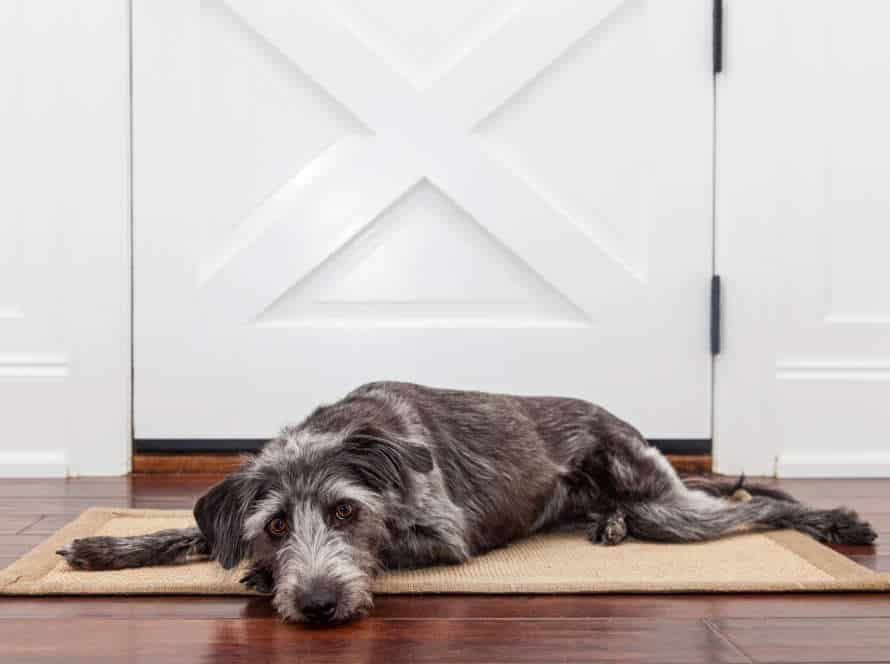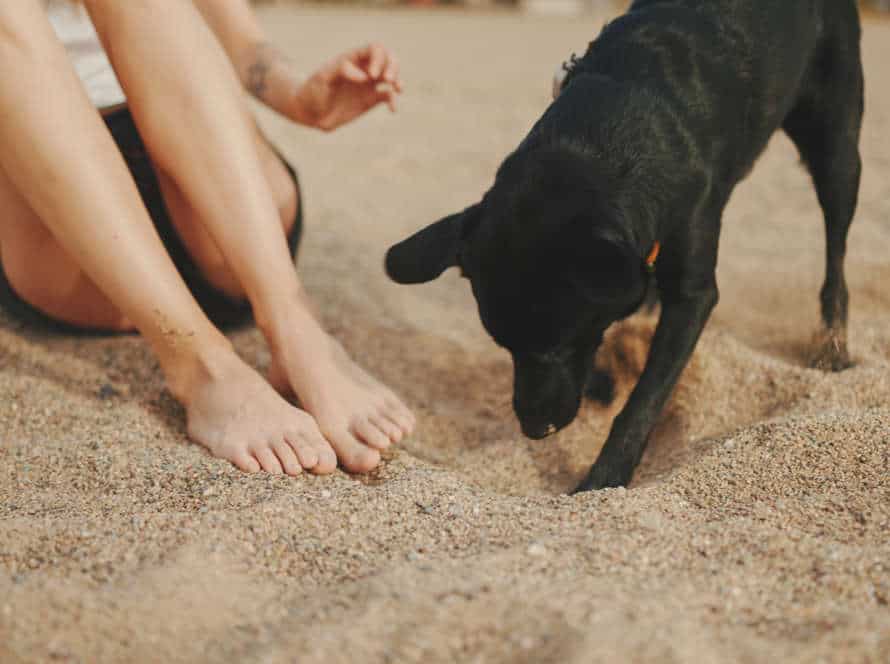Teaching Your Dog to Share: Preventing Possessiveness
Teaching your pooch to share and ward off possessiveness can be hard. But it’s essential for your pup’s safety and those around them. Here are some tips to help you:
- Set clear boundaries. Make a designated area for their food, toys, and other stuff. This way, your dog will know these items belong to them, and no one else should touch them.
- Reinforce good behavior. Give rewards, like treats or praise, when your dog shares willingly. This will create a positive association with sharing.
- Don’t punish possessive behavior. Don’t scold or punish your pup if they’re possessive. It might make their aggression or stress worse.
- Gradually increase share difficulty. As your pup learns to share, try to switch their toys with something they view as valuable. This will help them feel more comfortable sharing.
With patience and consistency, you can teach your pup generosity and comfort when sharing. Be patient and work at their pace, and always be aware of any signs of aggression.
Understanding Possessive Behavior in Dogs
Dogs can have possessive behavior. Signs of this can be growling, baring teeth, and lunging when they’re around others. To help them, it’s important to understand why this happens. Here, we’ll talk about why dogs can become possessive and what to do about it.
Signs of Possessive Behavior in Dogs
Possessive behavior in dogs? Yep, it exists! Common signs include: growling, snapping, biting, guarding, and aggression over food or toys. What causes it? Fear, territoriality, lack of socialization, past experiences – all of these. Get to the root of the problem to address it correctly.
Teaching your pup to share? Yes, and it’s easy! Socialize, use positive reinforcement, provide a safe environment. Tips to prevent and manage it: set boundaries, use positive reinforcement, provide a comfy space, and if needed, seek professional help. Take proactive steps to help Fido overcome possessiveness. Result? A happy, healthy relationship with you and others.
Common Causes of Possessive Behavior in Dogs
Dogs can act possessive for various reasons, such as fear, anxiety, or no training. Here are some common causes of possessive behavior in dogs:
- Resource guarding: Dogs can be territorial over their toys, food, or people. They may bark, bite, or snap when someone or another animal nears.
- Inadequate socialization: Dogs with no proper socializing or training may become possessive over their owners or their space.
- Fear and anxiety: Possessive behavior can be a way to cope with stress for anxious dogs.
To prevent possessive behavior in your pup, you should use the right training & socialization techniques. Also, desensitize & counter-condition, teach them to share, and provide lots of mental & physical stimulation. As a responsible dog owner, it’s important to understand your dog’s behavior. You must work to prevent or correct any problematic behavior.
Why Is It Important to Address Possessive Behavior in Dogs?
Addressing possessive behavior in dogs is essential. It’s a common issue that manifests in various ways, from guarding resources to aggression. Understanding possessive behavior is key, as it can indicate underlying anxiety or insecurity. By addressing it, we can improve the dog’s quality of life and prevent harm.
Teaching your dog to share, and preventing possessiveness, can be achieved with positive reinforcement techniques like desensitization and counter-conditioning. Seek help from a professional if the possessiveness is severe, or has caused aggressive behavior.
Remember: Patience, consistency and positive reinforcement are crucial for addressing possessive behavior. An experienced dog trainer can provide guidance and make sure the training is effective and safe.
Techniques for Preventing Possessiveness in Dogs
Possessiveness in dogs can be a problem. Address it quickly, before it’s too late. Teach your pup to share with others. Positive reinforcement, management and offering alternative activities can help. Let’s have a closer look at each approach!
Socializing Your Dog to Reduce Possessive Behavior
Teach your pup to get along with others! It’s a great way to stop possessive behaviors. Here are some ideas to help you out:
- Use rewards and praise to show good doggy behavior!
- Bring your pooch to a controlled space and let them meet other doggies.
- Use toys and treats as incentives for your pup to share and interact with others.
- Increase the number of other dogs and the complexity of the situations they are in.
- Keep your own behavior calm and confident.
By socializing your pup, you can stop possessive behaviors and make sure your pup is happy in the world!
Building Trust and Confidence in Dogs
Building trust & confidence in dogs is very important. Possessiveness can damage the bond between owners & their pet, and create tension. To avoid possessiveness in dogs, here are some tips:
- Start early by introducing new toys & treats.
- Teach commands like “leave it” & “drop it” & reward them when they obey.
- Play interactive games that involve sharing toys.
- Don’t take items away forcefully.
- Provide physical & emotional exercises.
- Always give positive reinforcement, never punish.
With the right training, your dog can learn to share & not be possessive.
Training Exercises to Help Prevent Possessive Behaviors
Training exercises can help stop possessive behaviors in dogs. It improves their socialization and overall behavior. Here’s a few helpful techniques:
- Practice trading. Give your dog a toy or treat. Then offer something of higher value in exchange. Do this again and again, offering the first item back at the end. This helps them learn to share and trade without worry.
- Encourage sharing. Let your dog play with other dogs and spend time with others. This teaches them to share, and not be possessive over toys and food.
- Avoid punishments. Don’t punish your dog for possessive behavior. Instead, reward them for sharing and good behavior.
With training and patience, your pup can learn to let go of possessiveness. They’ll be a social and better behaved pet.
Positive Reinforcement Techniques for Addressing Possessive Behavior in Dogs
Teaching your pup to share? Need to stop possessive behavior? It’s essential for a happy relationship between your dog and others. Positive reinforcement techniques can help! Learn how in this article. We’ll discuss techniques for addressing possessive behavior in your pooch.
Using Positive Reinforcement for Dogs
Positive reinforcement is a great way to help your pup learn to share. To prevent possessiveness, use these techniques:
- Treat-Based Training: Give your dog treats when they display non-possessive behavior. And don’t forget to give verbal cues like “good boy!” or “good girl!“
- Patience and Consistency: Teach your dog commands such as “drop it” or “leave it“. Reward them with treats and praise. Repeat the commands often.
- Counterconditioning: Create positive experiences around possessive objects, like food bowls and toys. Sit with your dog while they eat and pet them.
To make positive reinforcement work, remember to be patient, consistent, and reward good behavior!
How to Train Your Dog to Share Toys and Treats
Train your pup to give away toys and snacks. Positive reinforcement techniques can help.
Begin by showing your pup you’re in control through obedience and consistent reinforcement.
Introduce one toy or treat at a time, gradually increasing the level of distraction.
Whenever they share, reward them with a treat, praise, or extra play.
Increase the difficulty as they become more comfortable.
With patience, training and positive reinforcement, you can teach them to share and stop possessive behavior.
Remember to always supervise them during playtime for a safe and happy experience.
Summary: Train your dog to share toys and snacks. Start with obedience and consistent reinforcement. Use positive reinforcement techniques to reward them with treats, praise or extra play whenever they share. Increase the difficulty gradually and with patience to stop possessive behavior. Always supervise them during playtime to ensure safety and happiness.
Rewarding Good Behavior to Reinforce Positive Habits
Reward good behavior! It’s an effective way to encourage positive habits in dogs and tackle possessive behavior. By rewarding good behavior, dogs learn that the behavior brings good results. This makes them more likely to do it again.
Here are some tips for using positive reinforcement with possessive behavior:
- Treat or praise your dog when they willingly share a toy or treat without growling or guarding it.
- Give commands like “drop it” or “leave it” and reward them when they do it.
- Encourage dogs to interact positively when they share toys or treats.
With time, your pup will learn that sharing and relinquishing objects leads to positive results. This will help them form better habits.
Addressing Possessive Behavior in Multi-Dog Households
Possessiveness in dogs is common in multi-dog homes. It can be risky for all. Thankfully, there are methods to stop it. Here, we’ll discuss the basics of handling this behavior in multiple-dog households.
How to Teach Dogs to Share Toys and Treats in Multi-Dog Households
It’s essential to teach your dogs to share toys and treats in multi-dog households. This helps to avoid possessive behavior and conflicts. Here are some tips:
- Establish a “no guarding” rule from the start. Train them to wait before eating or playing with toys.
- Introduce “trading up”. Offer a treat or better toy in exchange for the current one.
- Train them to play together with a single toy, which promotes cooperation and interaction.
- Supervise them during playtime. Intervene if possessive behavior is present.
- Give each dog their own toys and feeding areas. This prevents competition and territorial disputes.
With patience and consistency, your pooches can learn to share and coexist peacefully.
Addressing and Preventing Possessive Behavior Between Dogs
Possessive behavior in dogs can have many causes, such as fear, anxiety, or guarding their possessions. It is necessary to stop and avoid this behavior, particularly in households with multiple dogs, to make sure everyone is safe and content.
Here are a few tips:
- Teach your dogs commands like “sit,” “stay,” and “leave it” to show you’re the leader.
- Give each dog their own food bowl, bed, and toys to avoid resource guarding.
- Introduce new toys or treats to your dogs when they are together to help them share.
- Observe your dogs while they play and eat to make sure there is no aggressive behavior.
- Consult a certified dog trainer or behaviorist if the possessive behavior continues.
By following these steps, you can prevent and control possessive behavior in dogs, creating a better atmosphere for all pets and people.
Techniques for Minimizing Possessiveness in Multi-Dog Households
In multi-dog households, possessive behaviors are common. It can cause tension and conflicts though, if not managed. Here are some tips to minimize it:
- Teach your dogs “drop it” to let go of toys or objects.
- Neutral territory for feeding times, to stop guarding behavior.
- No favoritism among pets; jealousy and possessiveness can result.
- Positive reinforcement and reward your dogs for good behaviour and sharing.
- Provide toys/resources for sharing, like bones and chew toys.
Following these tips can create a peaceful environment for your dogs, so they can live happily together without possessiveness.
Pro Tip: Training and socialization are essential. Set rules and boundaries from the start to avoid possessiveness.
Professional Help for Dogs with Possessive Behavior
Teaching your pup to share? A must! It can be tricky to break possessive habits, so getting professional help is the top choice. Professional trainers have tips and tricks to show your pooch what behavior is OK. Let’s dive in and find out how to teach your dog to share!
When to Seek Professional Help for Dogs with Possessive Behavior
Does your pup growl, snap, or bite? If so, it may be time to seek professional help! Here are some signs that you need to take action:
- Your doggo has bitten someone.
- They are overly aggressive and reactive around toys, food, and other resources.
- Their possessive behavior is getting worse and affecting their daily life.
Getting professional help can help you understand the cause and create strategies to address it. A trainer or behaviorist can teach your pup to share and stop the possessiveness. Not sure if professional help is needed? Ask your vet – they can provide the best advice.
How to Find a Qualified Dog Trainer or Behaviorist
Searching for a reliable doggy instructor or behaviour expert may seem overwhelming, yet with some exploration, you can discover the perfect proficient to help your furry companion. Here are few tips to help you find a qualified dog trainer or behaviour expert:
- Research: Look online for trainers or behaviourists in your region. Read reviews and check their qualifications carefully before making a decision.
- Get recommendations: Talk to local vets, rescue organisations, or family and friends who have used the services of a dog trainer or behaviour expert before. They can provide valuable insights and recommendations.
- Check credentials: Look for certifications from trustworthy organisations such as the Certification Council for Professional Dog Trainers (CCPDT) or International Association of Animal Behaviour Consultants (IAABC).
When you locate a dependable professional, they can teach your pooch to share and avoid possessive conduct. With the correct direction and training, your furry companion can learn to appreciate sharing their toys and space rather than becoming aggressive or defensive.
Working with a Professional to Address Possessiveness in Dogs
Possessive behavior in dogs is a real issue that needs sorting. A pro dog trainer can help! Here’s how:
- Assessing cause – They can figure out what’s causing the possessiveness, like fear, anxiety, or lack of socialization.
- Customized training – A tailor-made plan to break down the possessive behavior and train a dog to act differently.
- Training for pet parents – Teach pet parents how to boost positive behavior, and build healthy relationships between themselves and their pup.
- In-home training – The pro can check the dog in their own environment, to give pet parents more insight into their pup’s behavior.
Collaborating with a professional dog trainer is an ethical, effective way to deal with possessiveness. It’ll make sure both pet parents and dogs lead happy, healthy lives.
Frequently Asked Questions
1. How do I know if my dog is possessive?
A: Signs of possessiveness in dogs include growling or snapping when someone approaches their food or toys, refusing to share items or space, and showing aggression towards other animals or people when in possession of something they perceive as valuable.
2. What can I do to prevent possessiveness in my dog?
A: Teaching your dog to share starts with basic obedience training and establishing yourself as the pack leader. Providing positive reinforcement when your dog willingly shares their toys or food, and consistently setting boundaries and rules will help prevent possessive behavior.
3. Can possessiveness be cured in dogs?
A: While possessiveness can be challenging to address in some dogs, with consistent training and patience, it can be managed and even overcome. It is important to work with a professional dog trainer or behaviorist to develop an individualized plan for your dog.
4. Is punishment an effective way to address possessiveness in dogs?
A: No, punishment is not an effective way to address possessiveness in dogs. Punishment can escalate the behavior and create fear and mistrust in your dog, which can worsen the problem. Reward-based training is a much more effective approach to teach your dog to share and prevent possessiveness.
5. How can I teach my children to interact with my dog to prevent possessiveness?
A: Children should be taught to respect a dog’s space and belongings and should never approach them when they are eating or playing with toys. Encourage children to offer treats or rewards to the dog for good behavior to reinforce positive interactions, and always supervise their interactions with the dog.
6. How long does it take to teach a dog to share?
A: Every dog is different, so the time it takes to teach them to share will vary. Consistency is key, and it may take several weeks or even months of consistent training to overcome possessive behavior in some dogs.

